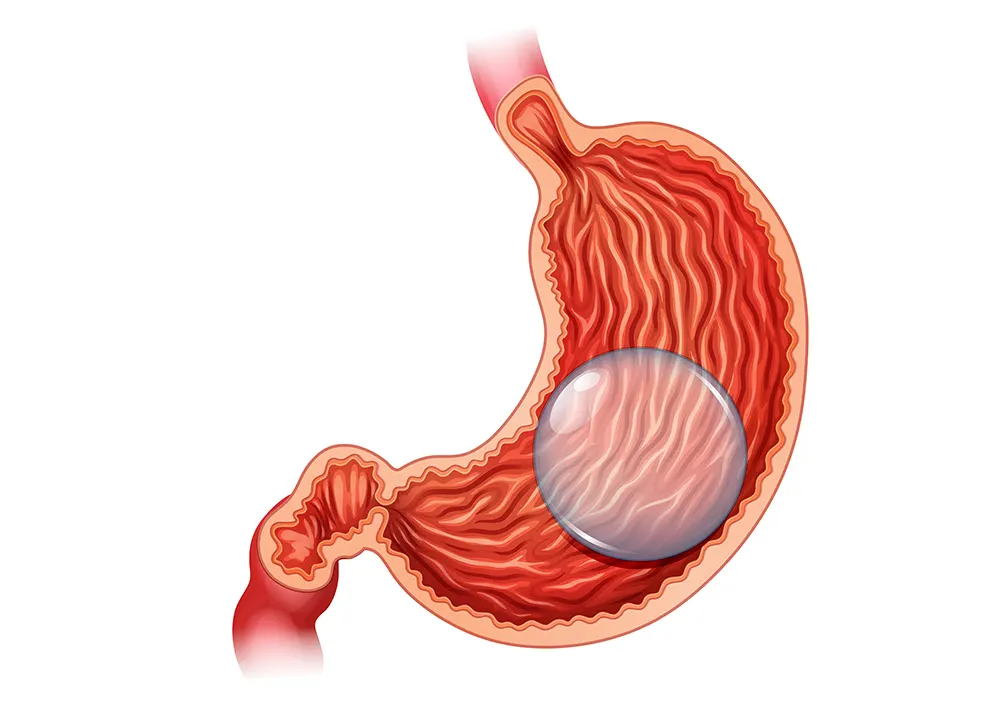- Call Today +90 537 762 59 24
- Open Hour Open 24 Hours

The Gastric balloon emerges as an effective solution for individuals grappling with weight reduction despite conventional dietary adjustments and physical exertion. Recent research indicates that those undergoing Gastric balloon procedures experience a noteworthy 10-15% reduction in their total body mass within the initial six months. In addition to fostering weight loss, this procedure can positively impact other health concerns, including hypertension, type 2 diabetes, and nocturnal respiratory disruptions.
It is imperative to note that the Gastric balloon offers a temporary solution. Typically removed after six months, patients must adhere to a well-balanced nutritional plan and exercise routine to sustain their weight loss. Furthermore, it may not be suitable for everyone; therefore, discussing potential risks and benefits with a certified healthcare professional is essential before considering this procedure.
The Gastric balloon is a non-invasive technique designed to aid individuals who have struggled to achieve weight reduction through traditional means. This procedure involves the insertion of a deflated silicone balloon into the stomach via an endoscope, inflated with a saline solution to occupy stomach space, inducing satiety and enabling a reduction in caloric consumption.
Serving as a temporary weight reduction solution, the Gastric balloon is typically removed after six months. During this period, patients are advised to maintain a nutritious diet and engage in physical activity to optimize weight reduction outcomes. This technique is often integrated into a comprehensive weight reduction program, including guidance, nutritional education, and support, aimed at helping patients attain and maintain their weight reduction goals. Deemed safe and effective, this procedure is particularly beneficial for those encountering difficulties with other weight reduction methods.
The Gastric balloon procedure is minimally invasive and is generally performed on an outpatient basis, eliminating the need for general anesthesia and lasting approximately 30 minutes. The process involves the insertion of an endoscope through the mouth to visualize the balloon's placement within the stomach. The deflated balloon is then introduced through the endoscope and filled with saline solution to achieve full expansion.
Once properly positioned and fully expanded, the endoscope is withdrawn, concluding the procedure. Post-procedure, patients may experience mild discomfort and queasiness as their body adjusts to the balloon's presence. A liquid diet is typically recommended initially, with a gradual transition to solid foods as tolerated. To achieve optimal weight reduction results, patients are advised to adhere to a designated dietary and exercise regimen during the six-month period the balloon remains in place.
Individuals unable to lose weight through conventional methods like diet or exercise.
Individuals with one or more health issues related to obesity, such as hypertension or diabetes.
Those who are overweight, even for obesity surgeries, and require gastric balloon placement to mitigate risks before undergoing surgery.
Certain medical conditions may preclude individuals from undergoing gastric balloon placement. Conditions such as gastrointestinal disorders, previous gastrointestinal surgeries, and pregnancy may be contraindications. A thorough medical assessment by a qualified healthcare professional is crucial to identify any potential obstacles to gastric balloon placement.
Let's take a look at frequently asked questions about Gastric Balloon
Weight loss is a journey that demands reliable and proven methods. Gastric balloon placement has emerged as a credible non-surgical approach, aiding individuals in achieving their weight loss goals. Backed by medical expertise, this method offers a reliable solution for those seeking an alternative to invasive surgical procedures.
Understanding the mechanics of gastric balloon placement is crucial to appreciating its contribution to weight loss. This procedure involves the temporary placement of a balloon in the stomach, reducing its capacity. Consequently, individuals experience a feeling of fullness with smaller meal portions, ultimately leading to reduced caloric intake and, subsequently, weight loss.
The weight loss potential with a gastric balloon varies from person to person. Factors such as lifestyle, adherence to dietary guidelines, and individual metabolism play a role in determining outcomes. On average, individuals can expect a significant reduction in weight during the period of balloon placement, with some achieving notable long-term results.
An innovative approach to gastric balloon placement comes in the form of the swallowable gastric balloon. This technology eliminates the need for traditional endoscopic insertion, making the process more accessible and less invasive. The swallowable balloon is ingested in a capsule, expanding in the stomach and initiating the weight loss process without the need for anesthesia or incisions.
While gastric balloon placement is generally considered safe, like any medical procedure, it may present potential side effects. Common side effects include nausea, abdominal discomfort, and vomiting during the initial adjustment period. However, these effects are typically temporary, and healthcare professionals closely monitor patients to ensure a smooth adaptation to the gastric balloon.
The removal of a gastric balloon is a straightforward process, often performed on an outpatient basis. Depending on the type of balloon used, removal may involve either deflation or extraction through endoscopy. Healthcare providers guide individuals through the removal process, ensuring a seamless transition and continued support for maintaining weight loss achievements.
Gastric balloon placement is suitable for individuals looking for a non-surgical weight loss solution. Candidates typically include those with a body mass index (BMI) between 30 and 40, who have struggled with traditional weight loss methods. Consulting with a healthcare professional is essential to determine individual eligibility and ensure that gastric balloon placement aligns with overall health goals.
© 2026 Copyright by Private Koru Hospital. All rights reserved.
